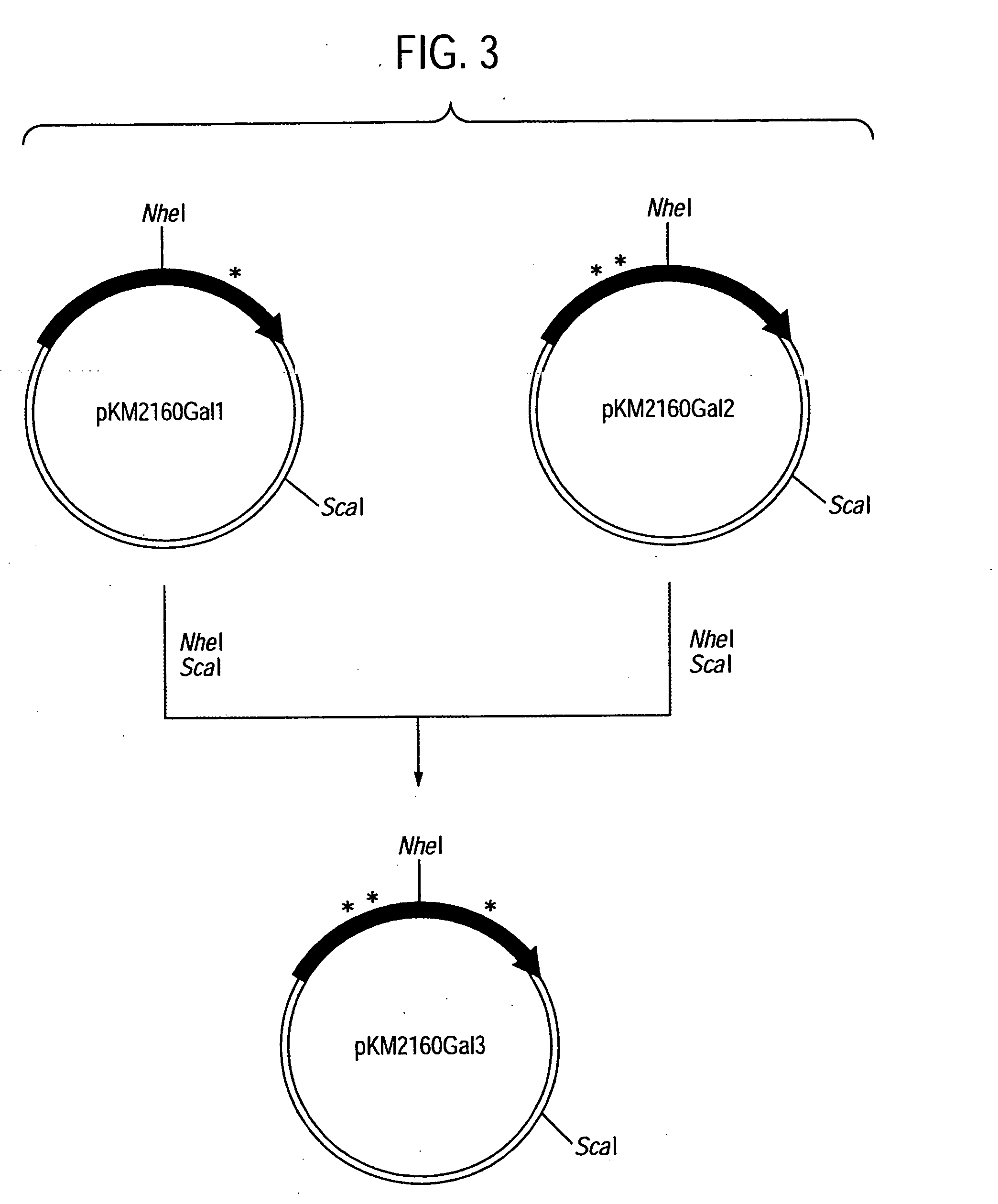Diagnostics and remedies for interstitial pneumonia
- Summary
- Abstract
- Description
- Claims
- Application Information
AI Technical Summary
Benefits of technology
Problems solved by technology
Method used
Image
Examples
example 1
Staining of Lung Tissues of Patients of Idiopathic Interstitial Pneumonia Using Anti-CCR4 Antibody:
[0351] T cells are accumulated in inflammatory regions. Accordingly, T cells accumulated in lung tissues of patients of idiopathic interstitial pneumonia were stained by using an antibody which reacts with CXCR3 expressing on the cell surface of Th1 cells and an antibody which reacts with CCR4 expressing on the cell surface of Th2 cells.
[0352] Paraffin sections were prepared from lung tissues collected from idiopathic interstitial pneumonia patients (14 cases) in accordance with the method described in a reference (Histotechnology: A self-instruction test. ASCP Press (1990)).
[0353] Immunostaining of the lung tissue paraffin sections was carried out using 6.32 μg / ml of a mouse anti-CCR4 antibody KM2160, 6.32 μg / ml of an anti-CXCR3 antibody (manufactured by Pharmingen) and a commercially available tissue immunostaining kit (SS MultiLink Detection Kit, manufactured by BioGenex). The m...
example 2
Staining of Lung Tissues of Patients of Collagen Diseases Using Anti-CCR4 Antibody:
[0358] Patients of collagen diseases are suffering from interstitial pneumonia in many cases. Accordingly, T cells accumulated in lung tissues of patients suffering from interstitial pneumonia due to collagen diseases such as dermatomyositis, polymyositis, systemic sclerosis (scleroderma) and rheumatoid arthritis were stained in the same manner as in Example 1 by using antibodies which react respectively with CXCR3 expressing on the cell surface of Th1 cells and with CCR4 expressing on the cell surface of Th2 cells.
[0359] Paraffin sections were prepared from lung tissues of interstitial pneumonia of collagen disease patients (CVD-IP) in accordance with the method described in the reference (Histotechnology: A self-instruction test. ASCP Press (1990)). Immunostaining of the tissues was carried out using an anti-CCR4 antibody KM2160, a commercially available anti-CXCR3 antibody (manufactured by Pharm...
reference example 1
Preparation of Human CDR-Grafted Antibody Against CCR4 (Anti-CCR4 CDR-Grafted Antibody):
1. Designing of cDNA Encoding VH and VL of Anti-CCR4 CDR-Grafted Antibody
(1) Designing of Amino Acid Sequence of VH of Anti-CCR4 CDR-Grafted Antibody
[0363] First, an amino acid sequence of the VH of an anti-CCR4 CDR-grafted antibody was designed as follows. An amino acid sequence of FR of VH of a human antibody was selected for grafting amino acid sequences of CDR1, 2 and 3 of VH represented by SEQ ID NOs:2, 3 and 4 using the anti-CCR4 mouse antibody KM2160 produced by according to the method described in Example 1 of WO01 / 64754. Human antibodies having high homology with KM2160 were retrieved from amino acid sequence data bases of existing proteins by BLASTP method (Nucleic Acid Res., 25 3389 (1997)) using GCG Package (manufactured by Genetics Computer Group) as a sequence analyzing system. When the homology of the actual amino acid sequence was compared with the homology scores, SWISSPROT...
PUM
 Login to View More
Login to View More Abstract
Description
Claims
Application Information
 Login to View More
Login to View More - R&D
- Intellectual Property
- Life Sciences
- Materials
- Tech Scout
- Unparalleled Data Quality
- Higher Quality Content
- 60% Fewer Hallucinations
Browse by: Latest US Patents, China's latest patents, Technical Efficacy Thesaurus, Application Domain, Technology Topic, Popular Technical Reports.
© 2025 PatSnap. All rights reserved.Legal|Privacy policy|Modern Slavery Act Transparency Statement|Sitemap|About US| Contact US: help@patsnap.com



